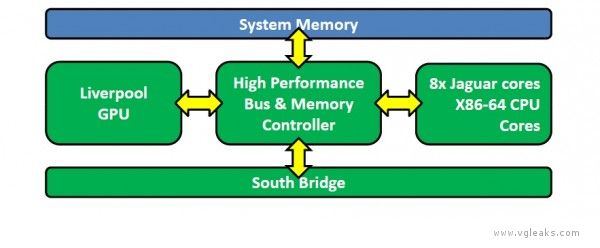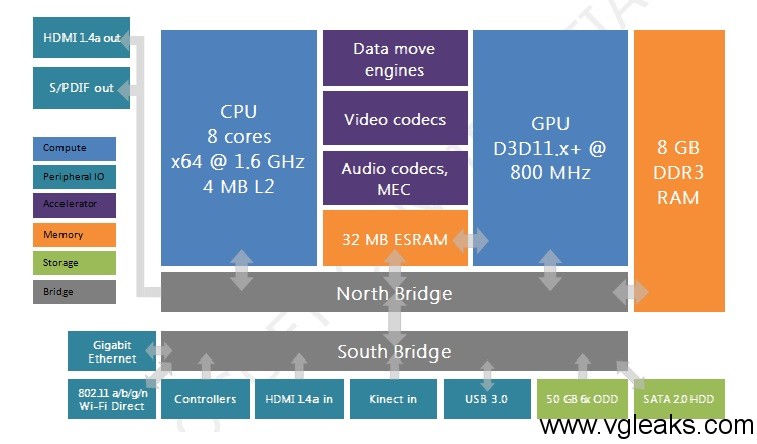You are using an out of date browser. It may not display this or other websites correctly.
You should upgrade or use an alternative browser.
You should upgrade or use an alternative browser.
Only 4.5 GB of ram available to games on ps4
- Thread starter MeachTheMonster
- Start date
-
- Tags
- gaming playstation 4 ps4
More options
Who Replied?- Joined
- Feb 28, 2013
- Messages
- 32,379
- Reputation
- -10,586
- Daps
- 22,220
- Reppin
- The Original Rec Room Gang
I was leaning towards get rid of your phone and PC if you flying birds down southguise, guise. your phone and internet has been spying on you for ages, what's one more device added into the mix?

But real talk, I'm a real dude. I be out here in these streets n shyt. And I know most of you guys don't. Yall some nerds who think you could even scare a real nikka

A smart intelligent person is trying to get paid, and would have cameras watching there house. Which the government could tap into
A broke ass kid who is a gamer would think "The government might spy on my while I smoke my lil bush weed they about to legalize"
Ok, like they don't have satellites right now that can look at you WHILE YOUR IN YOUR HOME from space? Yeah, Military Channel shown off that tech
Let me pull that up right quick..
http://science.howstuffworks.com/question529.htm
This is where you convince yourself that them "boys" are not a billion times more advanced than what you see in that video

backbreaker65
All Star
DDR3 is faster
Differences in the memory subsytems also gives us some insight into each approach to the next-gen consoles. Microsoft opted for embedded SRAM + DDR3, while Sony went for a very fast GDDR5 memory interface. Sony’s approach (especially when combined with a beefier GPU) is exactly what you’d build if you wanted to give game developers the fastest hardware.
http://www.anandtech.com/show/6972/xbox-one-hardware-compared-to-playstation-4/5
Differences in the memory subsytems also gives us some insight into each approach to the next-gen consoles. Microsoft opted for embedded SRAM + DDR3, while Sony went for a very fast GDDR5 memory interface. Sony’s approach (especially when combined with a beefier GPU) is exactly what you’d build if you wanted to give game developers the fastest hardware.
http://www.anandtech.com/show/6972/xbox-one-hardware-compared-to-playstation-4/5
I respect anandtech but 1. Its a dated article without all the info. 2. While the PS4 is faster it may not be as efficient as the X1 aka GT500 vs. ZR1. The GT500 is more powerful than the ZR1 but the ZR1 is overall the faster car. There will not be a night and day difference between the 2 consoles.
I respect anandtech but 1. Its a dated article without all the info. 2. While the PS4 is faster it may not be as efficient as the X1 aka GT500 vs. ZR1. The GT500 is more powerful than the ZR1 but the ZR1 is overall the faster car.
nikka, quit using car analogies. Your comparisons are junk.
backbreaker65
All Star
I respect anandtech but 1. Its a dated article without all the info. 2. While the PS4 is faster it may not be as efficient as the X1 aka GT500 vs. ZR1. The GT500 is more powerful than the ZR1 but the ZR1 is overall the faster car.
An article written on May 22, 2013 is dated, your reach is incredible, but your arms are too short to box with God.
OK what analogy should I use to help you comprehend? Maybe you are not knowledgeable about cars.nikka, quit using car analogies. Your comparisons are junk.
Yes in today's world 2 months is dated when we dont have confirmed specs of neither console. This article is a breakdown of rumored specs.An article written on May 22, 2013 is dated, your reach is incredible, but your arms are too short to box with God.
OK what analogy should I use to help you comprehend? Maybe you are not knowledgeable about cars.
Your comparisons were baseless to begin with. You just talking bullshyt just for the point of console wars.
shyt is sad, and now the same nikkaz in here copping pleas, smh, atleast Microsoft tells u upfront and is real, sony does sneak shyt and hides shyt, and tell u they giving 7 gigs to devs to make yall go crazy and then when yall hop on the bandwagon they pull your seat from under u
thats what i was saying from the start, most of these nikkaz already had they mind made up before sony or microsoft said anything about next gen, they said they would never pay for online, they get no games at e3 and are happy, now they get lied to and act like its no big deal, this made my choice on which one im getting first real easy
Yes in today's world 2 months is dated when we dont have confirmed specs of neither console. This article is a breakdown of rumored specs.
What specific specs are you looking for? Because all the info that Sony & Microsoft have given us are 100% in-line with PS4 & Xbox1 final devkits that was leaked in January/February.
Last edited:
Your comparisons were baseless to begin with. You just talking bullshyt just for the point of console wars.
Nope its not baseless. You just don't want to except unbiased discussion.
What specific specs are you looking for, besides CPU clock speed?
Well lets see the clock speed, the turbo freq. of the cpu, The clock speed of the gpu's. Basically how all the subsystems will work together to gives us the overall gaming and entertainment experience. These goes for both systems.
Nope its not baseless. You just don't want to except unbiased discussion.
Well lets see the clock speed, the turbo freq. of the cpu, The clock speed of the gpu's. Basically how all the subsystems will work together to gives us the overall gaming and entertainment experience. These goes for both systems.
Yo do realize that all the info that Sony & Microsoft have given us are 100% in-line with PS4 & Xbox1 final devkits specs that was leaked in February? That's what everyone is going off of:
World Exclusive: Playstation 4 (Orbis) unveiled [Updated: GPU Info inside]
One week ago we published a detailed report about Durango, the next-gen Microsoft system. The company has built a powerful system, more than Wii U. Now, we would like to share with you the specs for Orbis, Sony’s alternative machine for the next-gen. After you, gents and ladies.
LIVERPOOL SOC
- Custom implementation of AMD Fusion APU Arquitecture (Accelerated Processing Unit)
- Provides good performance with low power consumtion
- Integrated CPU and GPU
- Considerably bigger and more powerful than AMD’s other APUs

CPU:
- Orbis contains eight Jaguar cores at 1.6 Ghz, arranged as two “clusters”
- Each cluster contains 4 cores and a shared 2MB L2 cache
- 256-bit SIMD operations, 128-bit SIMD ALU
- SSE up to SSE4, as well as Advanced Vector Extensions (AVX)
- One hardware thread per core
- Decodes, executes and retires at up to two intructions/cycle
- Out of order execution
- Per-core dedicated L1-I and L1-D cache (32Kb each)
- Two pipes per core yield 12,8 GFlops performance
- 102.4 GFlops for system
GPU:
- GPU is based on AMD’s “R10XX” (Southern Islands) architecture
- DirectX 11.1+ feature set
- Liverpool is an enhanced version of the architecture
- 18 Compute Units (CUs)
- Hardware balanced at 14 CUs
- Shared 512 KB of read/write L2 cache
- 800 Mhz
- 1.843 Tflops, 922 GigaOps/s
- Dual shader engines
- 18 texture units
- 8 Render backends
Memory:
- 8 GB unified system memory, 176 GB/s
- 3.5 available to games (estimate)
Storage:
- High speed Blu-ray drive
- single layer (25 GB) or dual layer (50 GB) discs
- Partial constant angular velocity (PCAV)
- Outer half of disc 6x (27 MB/s)
- Inner half varies, 3.3x to 6x
- Internal mass storage
- One SKU at launch: 500 GB HDD
- There may also be a Flash drive SKU in the future
Networking:
- 1 Gb/s Ethernet, 802.11b/g/n WIFI, and Bluetooth
Peripherals:
- Evolved Dualshock controller
- Dual Camera
- Move controller
Extra:
- Audio Processor (ACP)
- Video encode and decode (VCE/UVD) units
- Display ScanOut Engine (DCE)
- Zlib Decompression Hardware
UPDATE: some people is confused about the GPU, here you have more info about it:
Each CU contains dedicated:
- ALU (32 64-bit operations per cycle)
- Texture Unit
- L1 data cache
- Local data share (LDS)
About 14 + 4 balance:
- 4 additional CUs (410 Gflops) “extra” ALU as resource for compute
- Minor boost if used for rendering
Dual Shader Engines:
- 1.6 billion triangles/s, 1.6 billion vertices/s
18 Texture units
- 56 billion bilinear texture reads/s
- Can utilize full memory bandwith
8 Render backends:
- 32 color ops/cycle
- 128 depth ops/cycle
- Can utilize full memory bandwith
http://www.vgleaks.com/world-exclusive-orbis-unveiled-2/
http://www.vgleaks.com/ps4-presentation-confirmed-leaks-and-what-can-we-expect-for-e3-2013/
World Exclusive: Xbox One (Durango) unveiled
As we promised during the weekend in the next weeks we will unveil Durango and Orbis. All the technical info you want to know about the next generation machines from Sony andMicrosoft.
The first one is Durango. In this article we present the system overview with the general components and some technical details about them.
How are Durango components connected?
Here you can see the Durango system block diagram:

Let’s check what’s inside the box:
CPU:
- x64 Architecture
- 8 CPU cores running at 1.6 gigahertz (GHz)
- each CPU thread has its own 32 KB L1 instruction cache and 32 KB L1 data cache
- each module of four CPU cores has a 2 MB L2 cache resulting in a total of 4 MB of L2 cache
- each core has one fully independent hardware thread with no shared execution resources
- each hardware thread can issue two instructions per clock
GPU:
- custom D3D11.1 class 800-MHz graphics processor
- 12 shader cores providing a total of 768 threads
- each thread can perform one scalar multiplication and addition operation (MADD) per clock cycle
- at peak performance, the GPU can effectively issue 1.2 trillion floating-point operations per second
High-fidelity Natural User Interface (NUI) sensor is always present
Storage and Memory:
- 8 gigabyte (GB) of RAM DDR3 (68 GB/s)
- 32 MB of fast embedded SRAM (ESRAM) (102 GB/s)
- from the GPU’s perspective the bandwidths of system memory and ESRAM are parallel providing combined peak bandwidth of 170 GB/sec.
- Hard drive is always present
- 50 GB 6x Blu-ray Disc drive
Networking:
- Gigabit Ethernet
- Wi-Fi and Wi-Fi Direct
Hardware Accelerators:
- Move engines
- Image, video, and audio codecs
- Kinect multichannel echo cancellation (MEC) hardware
- Cryptography engines for encryption and decryption, and hashing
http://www.vgleaks.com/world-exclusive-durango-unveiled-2/
http://www.vgleaks.com/next-xbox-presentation-what-should-we-expect-leaks-rumors-summary/
Last edited:
AquaCityBoy
Veteran
So was this shyt confirmed or not?
backbreaker65
All Star
Nope its not baseless. You just don't want to except unbiased discussion.
Well lets see the clock speed, the turbo freq. of the cpu, The clock speed of the gpu's. Basically how all the subsystems will work together to gives us the overall gaming and entertainment experience. These goes for both systems.
this is the ultimate charlie brown teacher post BLAH...BLAH BLAH BLAH BLAH.